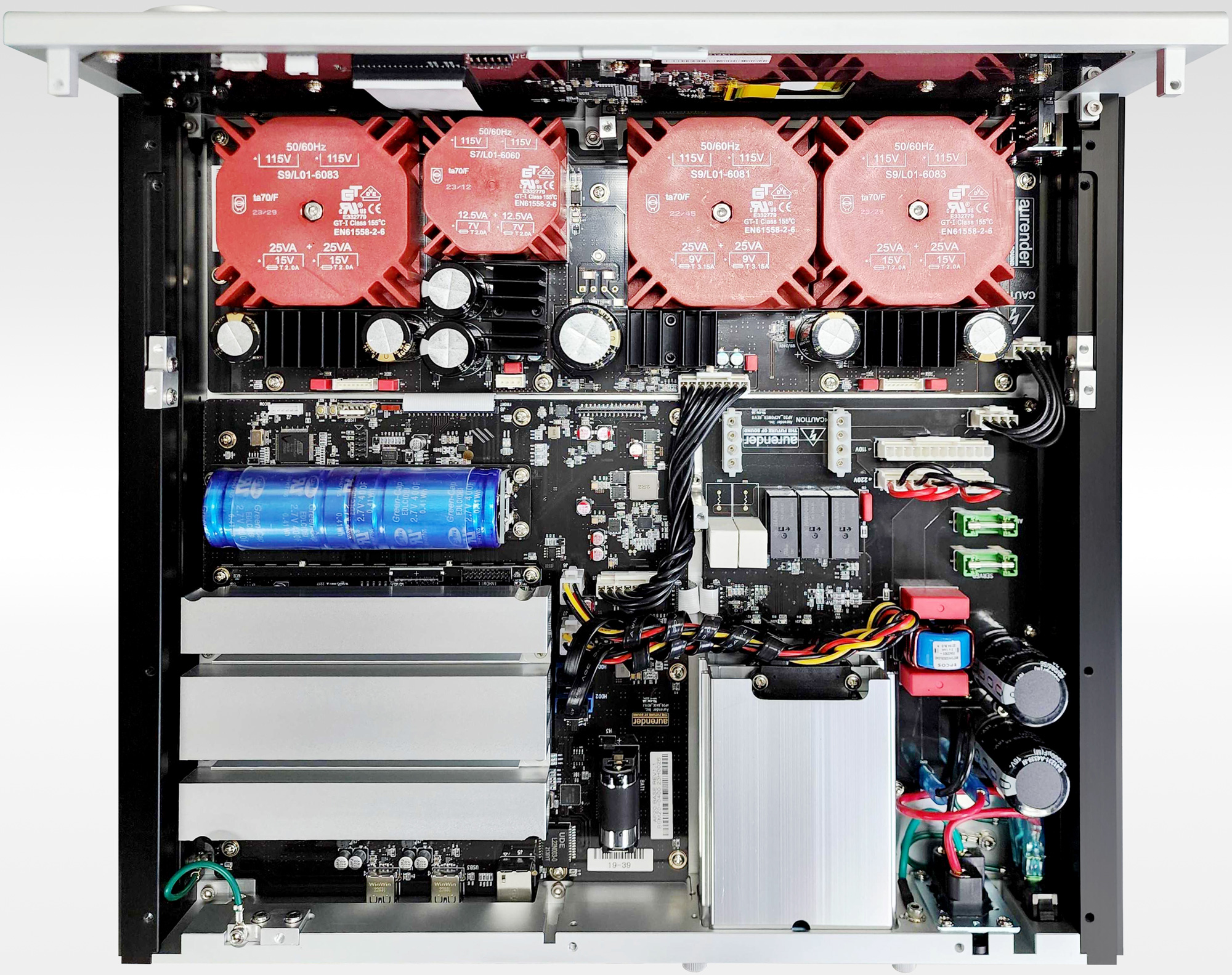Fundamentally, the point of an integrated amplifier is to be a cost effective alternative to separates, so it begs the question how an integrated amplifier gets to cost $24,200, especially one of class D, which is marketed by companies that manufactures the amplifiers as more affordable, more energy efficient and equally musical to conventional designs. Indeed, integrated amplifiers such as two of the $3,500 PS Audio Stellar Strata Mk2 that Doug Schroeder reviewed recently and the aforementioned $10,000 Technics SU-R1000 are demonstrably mature designs of superior constitutions and performance that rival comparably priced class A and class AB designs. Case in point, the $5,000 pair of Orchard Audio Starkrimson Mono Ultra Premium monoblocks that I reviewed in March this year are now sounding markedly even more dynamic than observed during the review period when driving my Sound Lab M945, meaning certain internal components are taking longer time to achieve break-in equilibrium.
The tonal character of the Aurender is exuberant to the extent that in a few aspects it mirrors class A. The glossiness of its tonality in the late Abbado 2013 Lucerne live recording of the Bruckner Symphony No. 9 CD, an era-defining release in its time, satiated my craving in the textural smoothness and midrange glow, and the Aurender’s handling of the exceptionally wide dynamic range and contrasting resembles high-bias class A intensity and strength. The Aurender’s timbral definition capability edged out even the Technics’. So I fed it a 24/192 remastering of the same work from Herbert von Karajan’s 1975 cycle, and it turned out to be a bit compressed dynamically with a softer dynamic transient albeit a supremely sympathetic rendition. The 1959 Bruno Walter conducting the Columbia Symphony Orchestra milestone in its 24/192 remastered edition reflected even less refined textures and tonal definition. I just can’t listen to lesser recordings with the Aurender for the time being, I’m sure I’ll cycle back some other time.
Similarly, playing a ripped Esoteric SACD live recording of Mahler Symphony No. 1 from 1989 with Berlin Philharmonic and Abbado produced a top demonstration class experience, as the meticulously recorded event prompted the electrostatic panels to reveal one of the rarest masterclass examples of the capture of an immense dynamic divide from the softest passages to ground shaking crescendos, utterly free of compression. The Deutsche Grammophon recording engineers and Esoteric mastering engineers coerced a recording of such force as only the likes of a symphony of the scale of a Mahler can accord. The depth of emotion embedded in his work is never reenacted more spectacularly technically and emotionally.
The Aurender’s 200 watts output into 8 ohms is much scarier than the 250 watts from the Starkrimson, in that a playback of the Ondekoza Dotou Banri 24/196 file not only made full use of the vast panel of the Sound Lab, producing the most expeditious of transients I’ve heard in my system, class A or not, and windows were about to shatter and the roof flying off beams and the Aurender just kept punching and punching in the cleanest and most definitive lower midrange to bottom-end renditioning through the panels to date. Houses made of concrete will get the most out of the Sound Lab experience for sure.
Then, I undertook what must be done and broke off the auditioning of the AP20 as an integrated amplifier and connected the AP20’s XLR and RCA analog inputs to the Bricasti Design M21 DSD DAC via Audience frontRow cables. I took out my iPhone, opened the Conductor app and tab the “RCA 1” and “”XLR” indicators onscreen respectively to activate the outputs. The AP20 features only one pair of XLR analog outputs.
Per Kelly, “The DAC output and external inputs are switched using high-performance relays to minimize signal distortion. The selected input immediately passes through a relay attenuator, allowing volume control precision of 0.25dB via high-quality MELF resistors and relays.
- ← Previous page
- (Page 3 of 4)
- Next page →
